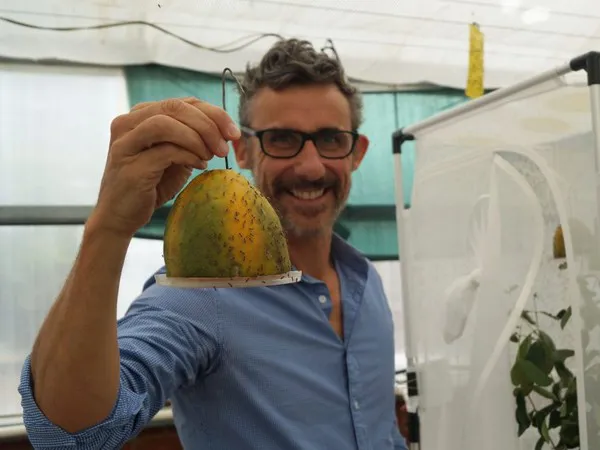A new national research project is underway that aims to develop a biocontrol strategy for managing Queensland fruit fly populations in Australia. The project focuses on the use of Australian parasitic wasps, or parasitoids, that specifically attack Queensland fruit fly. Project Lead Dr Paul Cunningham from Agriculture Victoria Research provides an overview.
Biocontrol – the use of natural enemies to manage pest populations – is widely regarded as a crucial component of integrated pest management (IPM) and area-wide management strategies to control insect pests. However, for the Australian pest fruit flies, surprisingly little work has been carried out to explore the potential for biocontrol in fruit fly management.
Facilitated by an Agriculture Victoria team led by Associate Professor Dr Paul Cunningham, the national fruit fly biocontrol project is a collaboration between state and territory governments, universities, the horticultural industry, and Hort Innovation. The research is exploring biocontrol strategies that utilise species of parasitic wasps, or parasitoids, as important natural enemies of Queensland fruit fly.
 Dr Paul Cunningham holds a fruit fly infested papaya covered in parasitoid wasps at the Tatura mass rearing facility.
Dr Paul Cunningham holds a fruit fly infested papaya covered in parasitoid wasps at the Tatura mass rearing facility.
“Queensland fruit fly management relies on having an effective toolkit of IPM practices that work together to reduce fruit fly populations,” Dr Cunningham said. “At present, most of the fruit fly management tools – such as bait spraying, mass trapping, and sterile insect releases – target the adult stage of the fruit fly’s lifecycle, but there are always going to be female flies that manage to evade control and go on to lay eggs in our fruit and vegetables. The beauty of this biocontrol is that it targets the egg and larval stages of the fly, so it works really well alongside these other practices.”
Parasitoids: Our friend and a fruit fly’s enemy
Parasitic (parasitoid) wasps are insect predators that are commonly used as biocontrol agents in agricultural environments. These tiny insects are renowned for their amazing sense of smell, which enables them to hunt down their prey – they are essentially the sniffer dogs of the insect world!
The two Australian parasitoid species selected for the biocontrol project are highly specific and only attack tephritid fruit flies (the insect family in which Queensland fruit fly belongs). Both species of parasitoid already thrive in Queensland and northern New South Wales where they can have significant impact on fruit fly populations when conditions are right, knocking populations down by 40 per cent or more.
For more information: ausveg.com.au
